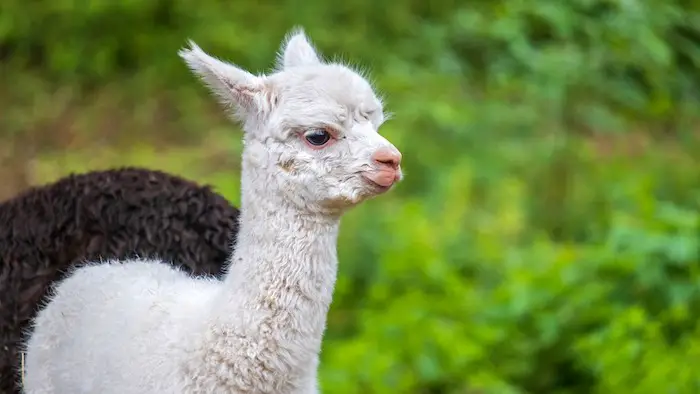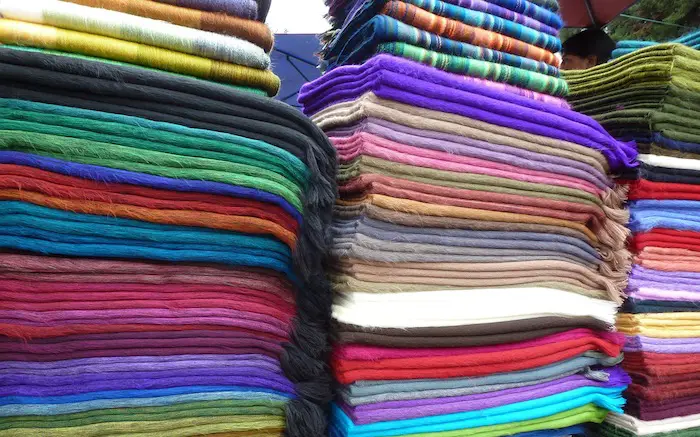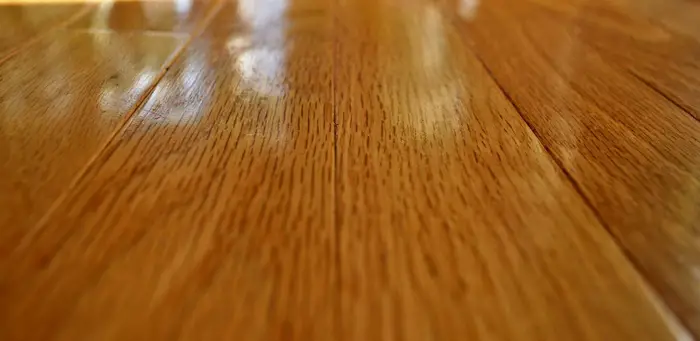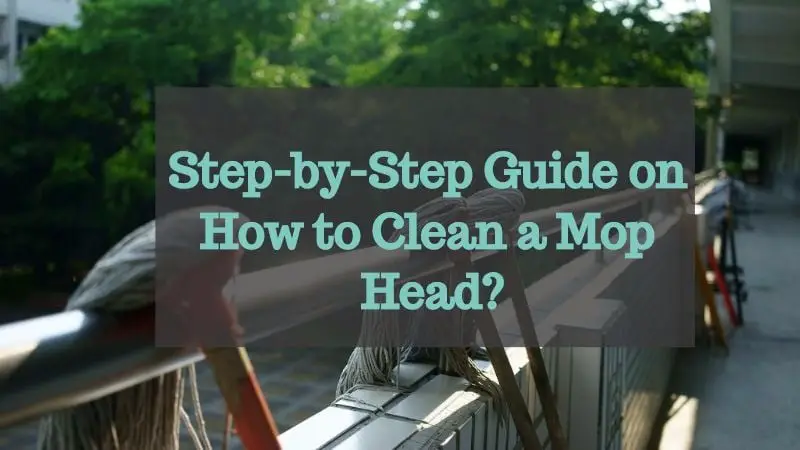Alpaca blankets are not only gorgeous and lustrous to look at but they take comfort to a different level altogether. Warmer than wool, yet lightweight, breathable, and cozy, these blankets are named so because they are spun from alpaca, a member of the camel family found in Andes, South America.
Unlike sheep wool blankets, Alpaca blankets are lanolin-free, which makes it hypoallergenic for the skin. If you follow the proper care instructions, these luxurious heirloom-quality blankets can last for decades. In this post, I will tell you the best way to maintain it after use.
So, how to clean an alpaca blanket? After extensive research I found that the best way to clean is to hand wash the blanket with a mild non-abrasive soap in slightly warm water. You may also use baby shampoo as it does not contain any chemicals or abrasive agents.
After washing, remember to keep the blanket on a flat surface to air dry completely as it has the tendency to retain moisture. You may keep a towel over it to help absorb the excess moisture to speed up the drying process. Remember to never use a dryer for alpaca as the heat will cause the delicate fibers to shrink.
Steps for Hand Washing At Home
The alpaca blanket has many things going in its favor. It is not only extremely soft and luxurious to feel, but also requires very little care and maintenance. The fibers have the ability to repel moisture and they do not absorb any dust or a bad odor, making them highly resistant to getting soiled.
If you must hand wash your luxurious alpaca blanket, we suggest that you follow these step by step instructions to ensure that you don’t end up damaging the fibers. You will need the following items before you start:
- Large tub or bath
- Mild wool wash or baby shampoo (eucalan)
- Tepid warm water
- A few large dry towels (beach towel)
- Flat area to lay the towels and blanket to dry
- Soft bristle hairbrush
Fill up the bathtub with tepid warm water. We suggest using eucalan for washing alpaca blankets as this is a mild wool-friendly natural laundry detergent. Alternatively, you may use baby shampoo or any mild liquid soap.
Agitate the blanket inside the water gently to get it completely wet and soaked. This might take some time (15-20 minutes) so don’t rush.
Drain the bathtub and gently press out excess soapy water from the blanket. You must take special care when the blanket is wet because the fibers are weaker and more vulnerable. Applying too much pressure may stretch, weaken, and damage the shape.
The advantage of using eucalan for washing is that you don’t need to rinse it out with water. For other mild soap or shampoo, you need to rinse but make sure you use water is the same temperature throughout. Water should not be very hot or else it can damage the fibers.
If the blanket is very soiled, you may need to repeat the above step a few more times with fresh warm water and soap until the blankets become clean. When the water running out is clear, press out as much excess water as you can using your hands. Don’t wring as this can damage the blanket.
Bundle up the wet blanket and put on a large dry towel. Wrap up carefully and walk on the towel with blankets wrapped inside. You will see a lot of water seeping out and soaking the towel. Repeat this with a few more towels until water stop coming out and wetting the towels.
Now, carry the blankets wrapped in the towel to any flat surface where you can lay the blanket to air dry. Unwrap the blanket and spread it out carefully on a clean floor. It may take a few days for the blanket to air dry completely.
After 24 hours, turn the blanket oven to expose the other side to air. The key lies in ensuring that you don’t stretch out the wet blanket or else you may damage it permanently.
When the blanket air dries completely, use a soft bristle brush to gently brush through the fur. A nic thorough and gentle brushing will restore the original appearance and gorgeous look of the blanket.
Steps For Cleaning Alpaca Blanket in Washing Machine
If you don’t have the time for hand washing, you may consider cleaning your alpaca blanket in a washing machine that comes with adjustable settings. Many washers these days come with advanced settings to wash the delicate wool items in a way that imitates hand-washing by subtly agitating water.
So, those who choose to use a washing machine to clean an alpaca blanket, must follow some specific directions to ensure that you do not damage the product in any way.
- Firstly, adjust the settings by changing the program to delicate wash
- Set the temperature to cold setting because exposing the fibers to heat with shrink and destroy the blanket.
- Next, set the spin speed to a slow or low setting. As the fibers are fragile, they should not be spun, heated, or wrung.
- Use a mild and delicate laundry detergent to wash to retain the color and texture, without compromising with durability.
- Now, lay the blanket flat in order to dry instead of using the dryer. The blanket should not be folded in layer or crumpled, or else it will not air dry properly.
Dry Cleaning Alpaca Blankets
If both hand washing and machine washing are not feasible options for you, consider a thirds alternative and that is dry cleaning. While most people would prefer to hand washing, dry cleaning would a better option or those living in cold and moist regions.
Look for a reputable dry cleaner in your area. We would suggest that you refer to customer reviews to find a good service provider that you can trust, and let him professionally clean the blanket. If there are any stubborn stains, the professionals will be able to take care of them.
Benefits of Alpaca Wool
Lightweight
The wool that is sheared from an alpaca is considerably lighter and is almost three times stronger, as well as five times stronger as compared to sheep’s wool. On top of that, it is also warmer by a factor of five when compared with sheep’s wool. Naturally, it becomes superior to sheep wool.
Extra warmth
Out of all the warmest fabrics that are used during the winter months across the globe (many of which are synthetic and designed for the sole purpose of keeping out the cold), you should know that alpaca fiber completely outshines Gore-Tex as well as the comforters that are made using goose-down.
They are much more capable of providing warmth and keeping a person dry, so if you live in a relatively chilly area, this is just what you need.
Smooth and silky
On top of that, the fabric feels as smooth as silk when you touch it, yet the finesse rivals that of cashmere. Because there’s no lanolin, you don’t need to worry about the fabric feeling itchy to the touch. There are some alpaca fibers that are infused with essential oils, and that makes them resistant to dirt and water too.
Superior quality fibers
The rating of the alpaca fiber is gauged in microns, so the higher grades, often known as the Royal or the Baby Alpaca, are rated between 20 and 23 microns. If you can find a blanket with this rating, you will probably be getting the softest, lightest, and the warmest blanket that you have ever used.
Lustrous
Needless to say, the glossy blankets look incredibly good, and because they serve all the functional purposes, you can’t go wrong with this. It might be a bit more expensive when compared with other types of blankets in the market, but they are definitely worth the money.
Breathability
The alpaca material is known for its breathability. So, despite of being warm and cozy, the blanket does not stifle you and keeps you comfortable at night. The microscopic air pockets in the fibers regulate temperature to keep your warm without getting excessively hot.
Hypoallergenic
These blankets are naturally hypoallergenic, thus they feel gentle on the skin without causing any irritations or allergic reactions. This an heirloom quality blanket that can stay good as long as you like it if you take good care.
Eco-friendly
The alpaca blankets are sustainably sourced and eco-friendly too. The blanket comes in 22 gorgeous and natural colors that add stylish and brightly dyed hues.
History Of The Alpaca

The alpaca is one of the most common species of the South American camelid, and many people tend to confuse it with the llama. However, if you look closely, you will realize that there is a considerable size difference between the llama and the alpaca. On top of that, alpacas have a cover of wool on them.
Known as the alpaca fiber, it is used quite commonly for making various kinds of knitted and woven items. Just like the wool that is sheared from sheep, alpaca fiber is also incredibly versatile and you can use it for a wide range of different applications, including the manufacture of hats, scarves, gloves, blankets, and a lot more.
Alpaca fiber is naturally harvested from the animal. But, you need to know that there are two distinct kinds of alpaca fleece available in the market. Their care and maintenance varies largely depending on the kind of alpaca fiber that was used. The most common variant that you will find in the market is the one that comes from the Huacaya. The fiber tends to grow and looks very similar to sheep wool. If you take a look at it, you will realize that it has the same level of “fluff” that you would find in sheep wool as well.
Then, the second type of alpaca is the Suri, and that is significantly more luxurious. It makes up less than 10% of the entire South American population of the alpacas, so it’s obviously more expensive. In fact, it looks closer to silk than wool and tends to hang off the body in dreadlocks. Huacaya fiber is used in a woolen process and can be spun into various different kinds of weighted yarns.
It turns into a durable, incredibly strong, and luxurious fiber that is quite silky and soft to the touch. Even though the fiber is quite similar to the wool sheared from sheep, it does not contain any lanolin, and that makes it hypoallergenic. It’s also fire-resistant and completely water-repellent by nature, which is why it is much more expensive.
However, you should know that if you do not maintain it properly, your alpaca fiber blankets are going to get dirty from time to time. Owing to the fact that it is such a different kind of material, you should know that its maintenance and upkeep is also quite different.
Related Questions
What’s the right method to store your alpaca blanket?
To store your alpaca blanket after use, we suggest that you keep it away from moist and damp conditions. Most Alpaca products come in a linen bag that allows the product to breathe and wick away the moisture, so don’t discard the bag. If you don’t have a linen bag, you may store it inside any plastic bag to keep it safe from insects and moisture.
Why is my new alpaca blanket shedding
A new alpaca blanket may shed a few loose fibers. You will typically see shedding in the thicker blankets and not the woven or knit items. Although a small amount of shedding is normal and reduces with time, you may ‘fix’ this by hand washing or rinsing in cold water.
Can I spin my alpaca blanket
If you don’t have enough sunlight in your region to properly air dry a wet blanket, you may spin it in a very low setting. We suggest that you use two dry soft towels with the blanket to protect and ensure better moisture removal. This will reduce the time needed to air dry, but you have to be very careful about maintaining a low spin setting.
Can I make my blanket waterproof?
There are products that can make your natural fiber blankets waterproof and spill-proof. We suggest the Fend Fabric & Footwear – Water & Dirt Repellent. This is a non-toxic spray that can remove stains caused by pets or children’s sticky hands and also make them less likely to appear.
Is it possible to spot treat alpaca fur blankets
You don’t need to wash the entire blanket every time there’s a stain or spot. You may do a spot treatment instead of washing. To spot clean, use a mild stain removing the bar. Wet the stained area and spot treat using the bar. Remove the soap suds and dirt using a lint-free cloth. Repeat the process until you are completely satisfied.


